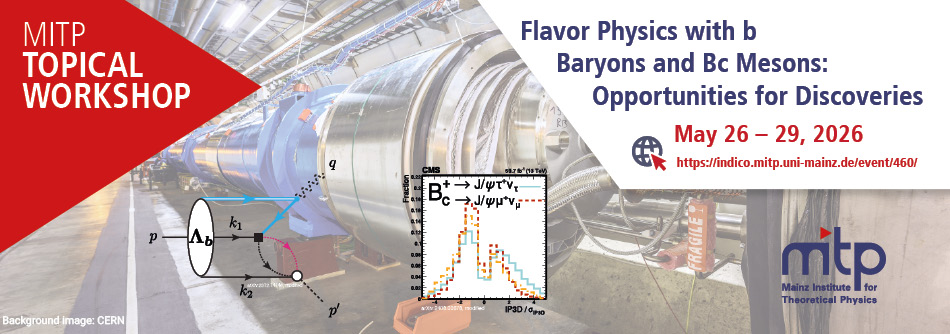The registration will close on 09 January 2026, 11:59 P.M. CET.
Explaining the flavor structure of the Standard Model, which involves ad hoc hierarchical couplings, remains both a challenge and a portal for tremendous opportunities. Due to its large mass and long lifetime, the beauty quark plays a central role in New Physics searches, with anomalies having appeared in both charged and neutral b-quark transitions.
While the B-meson sector has been deeply investigated, the LHC offers unique access to all species of b-hadrons, including Λb, Ξb, Ωb and Bc. The different spin-structures and/or underlying form factor calculations are complementary to the B-meson modes. Significant efforts are underway to ensure that the triggerless online DAQ at LHCb during Run 3, as well as the large parked datasets from ATLAS and CMS can be leveraged to the maximum, to measure branching fractions, angular observables, and lepton flavor universality ratios involving these rarer b-hadrons.
Advances are also being made in calculating the hadronic matrix elements that are needed to connect the decay observables to the underlying short-distance physics. There has also been substantial progress with lattice QCD, dispersive methods, LCSR, HQET, SCET, and QCD factorization calculations of the hadronic matrix elements for b-baryon and Bc decays, alongside phenomenological studies exploring novel observables and their sensitivity to new-physics scenarios.
The workshop, near the end of LHC Run 3, is well-timed to leverage the availability of new results on these heavier b-hadron decays and will bring together theorists and experimentalists to discuss their interpretations.

